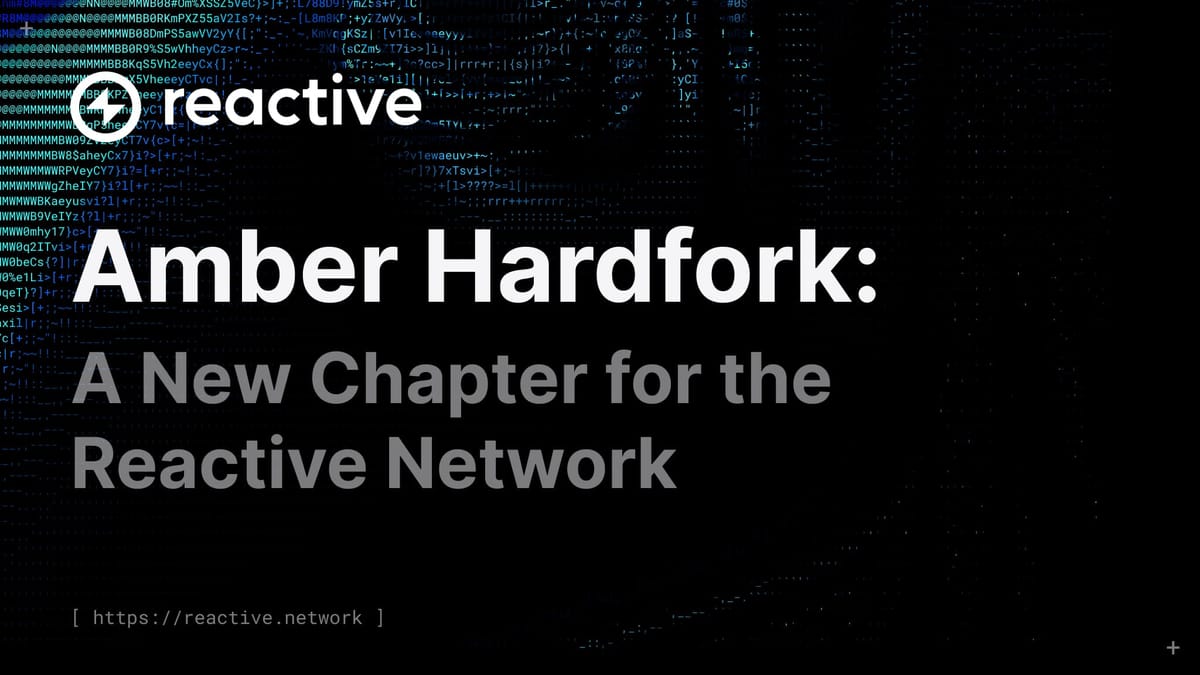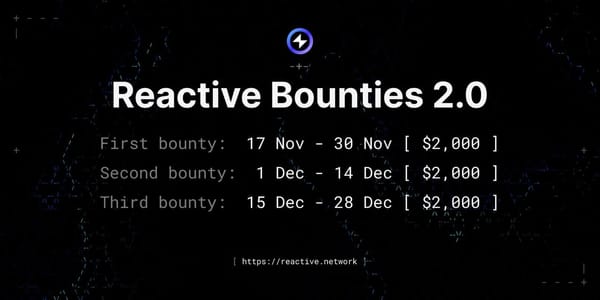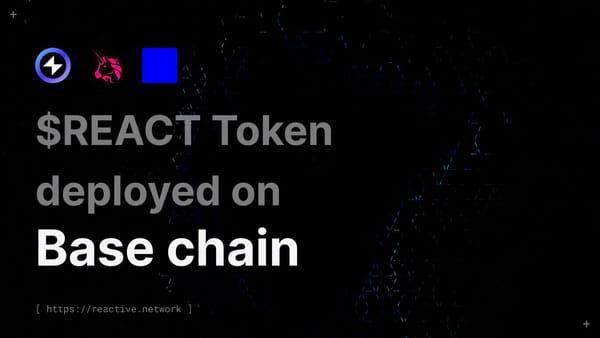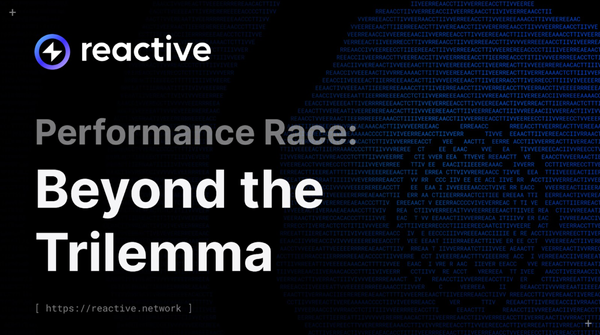Amber Hardfork: A New Chapter for the Reactive Network
Reactive Network’s first hardfork, Amber, marks a major upgrade toward stability and decentralization by removing direct dependencies on other blockchains. A new component called the Sequencer will simplify integration, improve resilience, and bring us closer to full validator decentralization.

In the lifecycle of every blockchain, there are moments that shape its future—milestones that define its architecture, capabilities, and resilience. For Reactive Network, Amber is that moment.
Amber is more than just our first hardfork. It’s a carefully engineered upgrade that sets the stage for a more scalable, stable, and decentralized network by addressing one of the most delicate challenges in Reactive’s architecture: managing external dependencies. The exact date of the Amber upgrade will be announced ahead of its deployment on mainnet.
Why We Needed Amber
Like most networks in the Web3 space, Reactive is built with the same foundational goals: performance, scalability, decentralization, and stability. Thanks to its EVM compatibility, it already inherits many of these traits out of the box. But unlike traditional blockchains, Reactive introduces a powerful and complex innovation—its state depends on other blockchains.
This means that what happens on upstream chains—Ethereum, BNB, and others—can directly influence the state of the Reactive Network. While this gives us unparalleled interoperability and automation capabilities, it also makes the network more sensitive to unexpected behavior outside of our control.
To move toward true decentralization and long-term stability, we needed a better solution. And that’s where Amber comes in.
Enter the Sequencer
The centerpiece of the Amber hardfork is the Sequencer—previously known as the Relayer Network. This new system component acts as a buffer between Reactive and all the upstream blockchains it connects to.
In essence, the Sequencer becomes a proxy that filters, processes, and delivers upstream data to the Reactive Network. By doing this, it removes the network’s direct dependency on the external blockchains, significantly improving Reactive’s resilience and reducing the risks of external failures or unexpected behaviors cascading into our consensus mechanism.
What this means in practical terms is powerful:
- New blockchains can now be added without requiring a hardfork
- Node operations become simpler and lighter, removing much of the overhead developers previously needed to manage
- The architecture paves the way for future decentralization—a public Validation Program, where anyone can participate in securing and operating the network
What the Sequencer Does
The Sequencer isn’t just a middleware layer—it carries two essential responsibilities:
- It acts as an oracle: It monitors upstream chains, reads events, and packages them for the Reactive Network to process
- It serves as a single source of truth: Instead of the network itself constantly querying upstream chains, the Sequencer provides a consolidated, consistent feed of validated data
This offloads the complexity of cross-chain event tracking from the consensus layer, keeping the core network lean and reducing the surface area for bugs or vulnerabilities.
Decentralization—By Design
At launch, the Sequencer will be operated by Reactive core contributors. But that’s only the beginning. Just like the rest of our infrastructure, the Sequencer is designed to decentralize over time. Eventually, it will become a permissionless network of data providers, much like oracles—but purpose-built for event-driven, cross-chain execution.
This phased approach gives us time to optimize, observe, and iterate—without sacrificing the safety or stability of the mainnet.
What Does This Mean for REACT Holders?
If you’re holding or staking REACT, there’s nothing to worry about—your token balances, staking positions, and all on-chain data will carry over seamlessly with the Amber hardfork. No action is required on your part to preserve your assets or staking rewards.
However, since the Amber hardfork introduces a new network configuration, you’ll need to add the updated Reactive Network details to your wallet (e.g., MetaMask) to continue transacting after the upgrade. This is a simple one-time setup, and we’ll publish the exact network information around the time of the fork.
A Step Toward the Future
Amber marks a critical turning point in Reactive’s development. It brings architectural maturity and significantly reduces the coordination cost of expanding to new chains. It helps simplify node operation for future validators. And most importantly, it strengthens our foundation as we move toward a more open, decentralized network.
The Sequencer will not only shape how we scale, but also how we govern, interact, and evolve.
We’re proud of what we’ve built—and even more excited for what’s coming.
TL;DR: Reactive Network’s Amber Hardfork
- Amber is Reactive Network’s first major hardfork, introducing a new component called the Sequencer.
- The Sequencer removes direct dependency on upstream blockchains, increasing network resilience.
- It acts as a proxy and oracle, providing a consistent stream of validated data from other chains.
- New blockchain integrations no longer require hardforks—making Reactive more modular and future-proof.
- This upgrade simplifies validator operations, supporting our roadmap toward an open Validation Program.
- The Sequencer will decentralize over time, becoming a key part of Reactive’s long-term architecture.
About Reactive Network
The Reactive Network, pioneered by PARSIQ, ushers in a new wave of blockchain innovation through its Reactive Smart Contracts (RSCs). These advanced contracts can autonomously execute based on specific on-chain events, eliminating the need for off-chain computation and heralding a seamless cross-chain ecosystem vital for Web3’s growth.
Central to this breakthrough is the Inversion of Control (IoC) framework, which redefines smart contracts and decentralized applications (DApps) by imbuing them with unparalleled autonomy, efficiency, and interactivity. By marrying RSCs with IoC, Reactive Network is setting the stage for a transformative blockchain era, characterized by enhanced interoperability and the robust, user-friendly foundation Web3 demands.
Website | Blog | Twitter | Telegram | Discord | Docs





